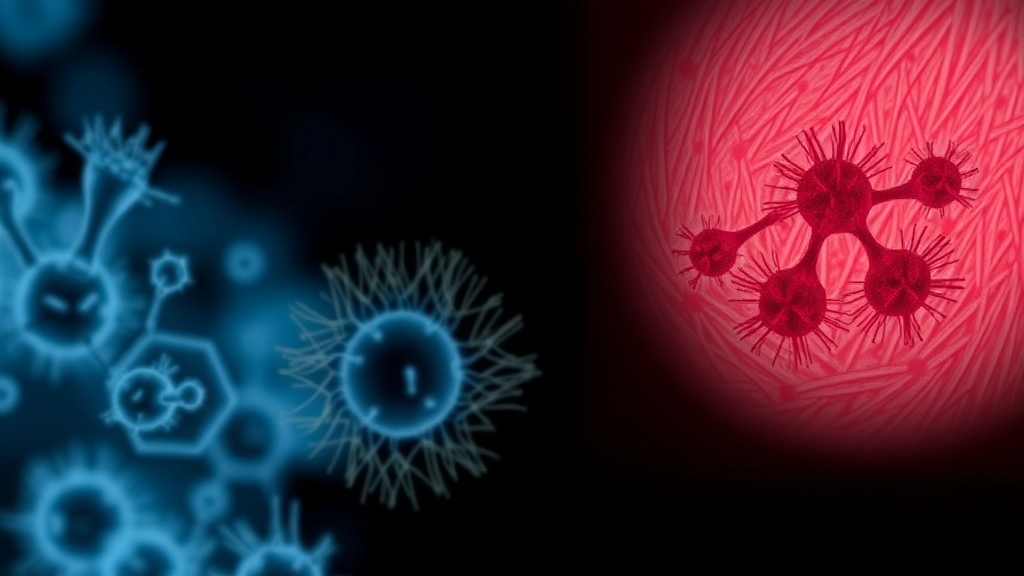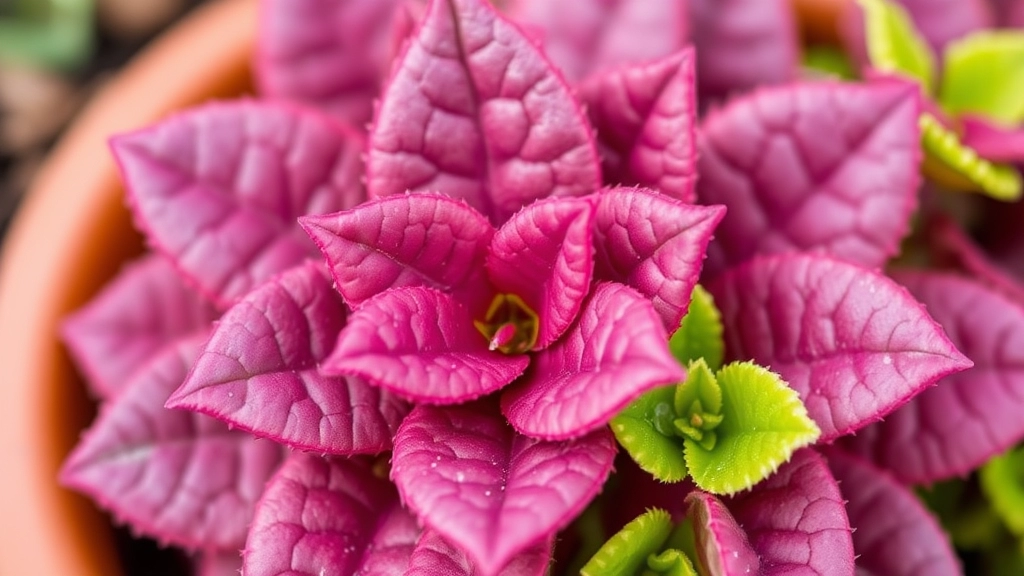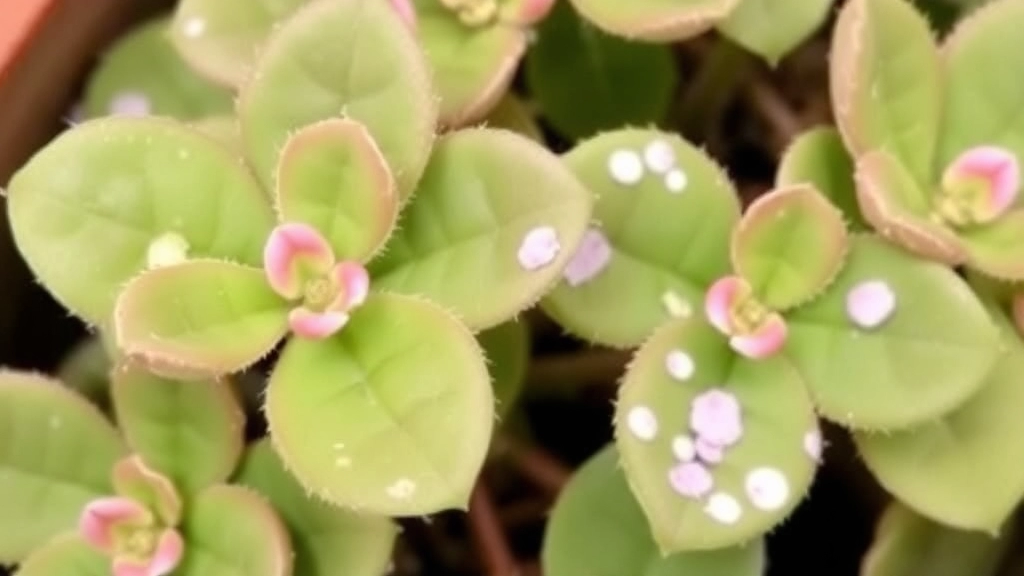Dealing with Kalanchoe Leaf Spot
Dealing with Kalanchoe Leaf Spot can be a real headache for plant enthusiasts. The spots often signal underlying issues like fungal infections, bacterial problems, or even pest infestations. Identifying the root cause is crucial for effective treatment and future prevention. Common culprits include Cercospora kalanchoae and other pathogens that thrive in moist conditions.
Effective Treatment
Effective treatment starts with isolating the affected plant to prevent the spread of infection. Pruning damaged leaves, adjusting watering habits, and ensuring proper light exposure can make a significant difference. Preventive measures like regular inspections and maintaining optimal environmental conditions can help keep your Kalanchoe healthy and spot-free.
When you notice unsightly leaf spots on your Kalanchoe, it can be a source of frustration. What could be causing these blemishes?
Several common factors contribute to leaf spots on Kalanchoe plants, and understanding them is essential for effective care.
**Environmental Stressors**
– **Overwatering**: This is one of the most prevalent causes. Excess moisture can lead to root rot, creating conditions ripe for leaf spots.
– **Underwatering**: Conversely, too little water can stress the plant, resulting in dark, dry spots on leaves.
– **Poor Drainage**: Ensure that your pot has adequate drainage holes. Stagnant water can lead to fungal infections.
**Nutrient Deficiencies**
– **Lack of Nutrients**: A shortage of essential nutrients like nitrogen or magnesium can manifest as yellowing leaves with spots.
– **Soil Quality**: Using poor-quality soil can exacerbate nutrient deficiencies, impacting overall plant health.
**Light Conditions**
– **Insufficient Light**: Kalanchoe thrives in bright, indirect sunlight. Too little light can weaken the plant, making it susceptible to spots.
– **Excessive Direct Sunlight**: On the flip side, too much direct sunlight can scorch leaves, leading to brown spots.
By recognising these common causes, you can take steps to prevent and treat leaf spots effectively. For more detailed information on caring for your Kalanchoe, check out this [complete guide to Kalanchoe plant care](https://planthq.org/complete-guide-to-kalanchoe-plant-care/). If you’re dealing with specific issues like leaf discoloration, you might find our [guide on why Kalanchoe leaves turn soft](https://planthq.org/why-are-my-kalanchoe-leaves-turning-soft-causes-solutions/) particularly useful.
Identifying Fungal and Bacterial Infections

Have you ever noticed those unsightly spots on your Kalanchoe leaves and wondered if it’s a fungal or bacterial issue? You’re not alone! Many plant lovers face this dilemma, and knowing how to identify these infections can save your plant from further damage.
Fungal Infections: What to Look For
Fungal infections are sneaky little devils. Here are some tell-tale signs:
- Brown or black spots: Usually round and often surrounded by a yellow halo.
- Powdery mildew: A white, powdery coating on leaves, especially in humid conditions.
- Leaf drop: If leaves are falling off without much reason, it might be time to investigate.
Fungi thrive in damp environments, so if your Kalanchoe is sitting in water, it could be a prime target.
Bacterial Infections: Spotting the Difference
Bacterial infections can be tricky. Here’s what to keep an eye out for:
- Water-soaked spots: These often start small and can expand rapidly, turning brown or black.
- Wilting leaves: Even though they look hydrated, they might be struggling due to bacterial rot.
- Sticky residue: If you notice a strange sticky film, it could be a sign of bacterial presence.
Bacteria tend to flourish in overly wet conditions, so make sure your watering routine is on point!
Why Identifying Matters
Understanding whether you’re dealing with a fungal or bacterial issue is crucial for treatment. Each requires a different approach, and treating the wrong one can make things worse.
III. The Role of Pests in Causing Leaf Spots
When caring for Kalanchoe plants, you might notice unsightly leaf spots that can stem from various issues. One significant factor to consider is the presence of pests.
Common Pests Affecting Kalanchoe:
- Aphids: These small, soft-bodied insects suck sap from the leaves, leading to yellowing and spotting.
- Spider Mites: These tiny arachnids create fine webs and cause stippling on leaves, resulting in pale spots.
- Mealybugs: These white, cotton-like pests congregate in leaf axils, causing leaf drop and spotting.
- Thrips: These slender insects can cause silvery streaks and dark spots on the foliage.
Signs of Pest Infestation:
- Check for visible pests on the leaves or stems.
- Look for webbing, especially with spider mites.
- Observe any sticky residue (honeydew) that can attract further pests.
Impact on Leaf Health:
Pests not only cause direct damage but can also introduce diseases, compounding the leaf spot issue. For more detailed information on causes and solutions for leaf spots, you can refer to our guide on black spots on Kalanchoe leaves and explore our Kalanchoe Panda Plant care guide for tips on maintaining healthy growth.
Effective Treatment Options for Kalanchoe Leaf Spot

When you notice leaf spots on your Kalanchoe, it can be distressing. You may wonder what to do next to save your beloved plant. Fortunately, there are effective treatment options available to help restore your Kalanchoe to its former glory.
1. Identify the Cause First
Before diving into treatments, it’s crucial to identify whether the leaf spots are caused by fungal or bacterial infections, or perhaps pests. This step ensures that you choose the right treatment method.
2. Fungal Infections
If you suspect a fungal infection, consider the following treatments:
- Fungicides: Use a commercial fungicide specifically designed for houseplants. Follow the instructions carefully for the best results.
- Homemade Solutions: A mixture of water and baking soda (1 tablespoon of baking soda per quart of water) can be sprayed on affected leaves to help combat mild fungal issues.
3. Bacterial Infections
For bacterial infections, you might want to:
- Remove Affected Leaves: Prune off any severely affected leaves to prevent the spread.
- Antibacterial Spray: Use a diluted solution of hydrogen peroxide (1 part hydrogen peroxide to 10 parts water) to spray on the leaves, which can help eliminate bacteria.
4. Pest Management
If pests are the culprits, here are some effective measures:
- Insecticidal Soap: This is a safe option for treating pests like aphids and spider mites. Spray it on the affected areas as directed.
- Neem Oil: A natural pesticide that can be effective against various pests. Mix according to the instructions and apply to your Kalanchoe.
5. General Care Tips
- Watering: Ensure you are not overwatering your plant, as excess moisture can lead to both fungal and bacterial growth.
- Air Circulation: Improve air circulation around your Kalanchoe by spacing it well from other plants.
Preventive Care: Watering, Light, and Temperature Management
When it comes to keeping your Kalanchoe healthy, preventive care is key. Many plant enthusiasts often worry about the right conditions for their plants to thrive.
Watering Practices
One of the most common issues leading to leaf spots is improper watering.
- Frequency: Water your Kalanchoe only when the top inch of soil feels dry.
- Method: Ensure thorough watering, allowing excess water to drain out.
- Avoid Overhead Watering: This can lead to fungal growth on the leaves.
Light Requirements
Kalanchoe plants flourish in bright, indirect sunlight.
- Location: Place your plant near a window with filtered light.
- Duration: Aim for about 6 hours of light daily.
- Avoid Direct Sunlight: Too much direct sun can scorch the leaves.
Temperature Conditions
Temperature plays a critical role in plant health.
- Ideal Range: Keep your Kalanchoe in a room between 18°C and 24°C (65°F to 75°F).
- Avoid Drafts: Sudden temperature changes can stress the plant.
- Humidity Levels: Kalanchoe prefers moderate humidity; avoid overly dry environments.
By managing watering, light, and temperature effectively, you can create a thriving environment for your Kalanchoe, reducing the likelihood of leaf spots. For more detailed tips, check out our expert tips for thriving Kalanchoe plants. Additionally, if you’re curious about specific varieties, our guide to 150 species of Kalanchoe is a great resource.
Best Practices to Restore and Maintain Kalanchoe Plant Health
So, you’ve tackled those pesky leaf spots on your Kalanchoe, but what’s next?
Let’s dive into some best practices to keep your plant thriving and prevent future issues.
Consistent Watering
- Water wisely: Kalanchoes prefer to dry out between waterings. Overwatering can lead to root rot and more leaf spots.
- Check the soil: Stick your finger in the soil; if it’s dry an inch down, it’s time to water.
Optimal Lighting
- Bright, indirect light: Kalanchoes love light but can get scorched in direct sun. Aim for a spot where they can soak up bright, filtered light.
- Rotate your plant: Every few weeks, give it a gentle turn to ensure all sides get equal light.
Temperature Control
- Keep it cozy: Kalanchoes thrive in temperatures between 18°C to 24°C. Avoid placing them near drafts or heating vents.
- Watch for sudden changes: Sudden temperature shifts can stress your plant, making it more susceptible to diseases.
Regular Inspection
- Check for pests: Make it a habit to inspect your Kalanchoe regularly for pests. Early detection is key!
- Remove dead leaves: Trim off any dead or damaged leaves to prevent disease spread and encourage new growth.
Fertilizing
- Feed wisely: Use a balanced, diluted fertiliser during the growing season (spring and summer). This gives your Kalanchoe the nutrients it needs to flourish.
- Cut back in winter: Don’t fertilise in the colder months; your plant will be resting.
Repotting
- Consider repotting: If your Kalanchoe outgrows its pot or the soil looks depleted, it might be time for a fresh start. Choose a well-draining mix to keep those roots happy.
Share Your Journey
Remember, every plant parent has faced challenges. Sharing your experiences can help others navigate their Kalanchoe care journey too!
If you’re looking for more tips, check out our ultimate guide to growing and caring for Kalanchoe.
FAQs About Kalanchoe Leaf Spot
What are the common signs of fungal infections in Kalanchoe plants?
Fungal infections can be identified by brown or black spots often surrounded by a yellow halo, powdery mildew which appears as a white, powdery coating on leaves, and unexpected leaf drop. These infections thrive in damp environments.
How can I tell if my Kalanchoe has a bacterial infection?
Bacterial infections may present as water-soaked spots that expand and turn brown or black, wilting leaves that appear hydrated, and a sticky residue on the leaves. These conditions often occur in overly wet environments.
Why is it important to identify the type of infection on my Kalanchoe?
Identifying whether the infection is fungal or bacterial is crucial because each requires a different treatment approach. Using the wrong treatment can exacerbate the problem.
What treatments are effective for fungal infections in Kalanchoe?
For fungal infections, you can use commercial fungicides designed for houseplants or homemade solutions like a mixture of water and baking soda (1 tablespoon of baking soda per quart of water) sprayed on the affected leaves.
How should I treat bacterial infections on my Kalanchoe?
To treat bacterial infections, prune off severely affected leaves and use an antibacterial spray made from a diluted solution of hydrogen peroxide (1 part hydrogen peroxide to 10 parts water) on the leaves.
What should I do if pests are causing leaf spots on my Kalanchoe?
If pests are the issue, consider using insecticidal soap for aphids and spider mites, or neem oil as a natural pesticide. Follow the instructions for mixing and application.
What general care tips can help prevent leaf spots on my Kalanchoe?
To prevent leaf spots, ensure you are not overwatering your plant, as excess moisture can lead to infections. Also, improve air circulation around your Kalanchoe by spacing it well from other plants.
References
-
Kalanchoe Leaf Spot: What Causes Spots On Kalanchoe Leaves
-
How to Care for Kalanchoe Plants
-
Kalanchoe: How to Grow and Care for Kalanchoe Plants
